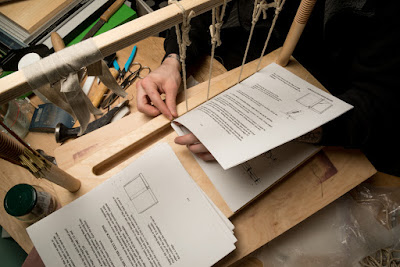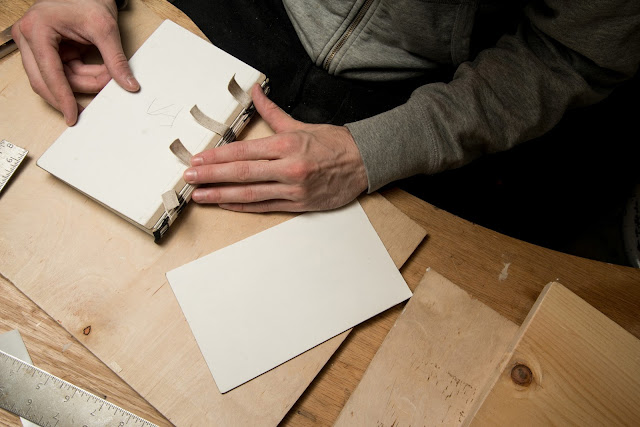The K-118 Style
Recently I came across what is referred to as the K 118 binding style, named so for the bindery in which it is believed to have come from. Bound in approximately 1493 in the city of Nuremberg and from all I can tell seem to be the only historical examples that exist to have been photographed. Its structure intrigued me because it seems to allow for an incredible amount of flexibility in the spine allowing for the creation of books that opened flat, had no wasted space in the gutter and did not sacrifice quality construction to achieve these ends (as is the usual case these days). Its principle elements seem relatively simple to deal with. Sewing is on supports, but cords or tapes can be chosen. Rounding is pronounced or excessive by some standards. The combination of thread thickness, gathering size and amount of round should be so, as to eliminate swell once finished. Boards are rounded on the outside of the spine edge to extend the round on the spine and the sewing supports are attached with a 1/32" gap between the boards and the spine. The spine is lined with parchment sized to fit in between the tapes or cords and three times longer then the spine itself. The parchment is softened only slightly to reduce the expansion/contraction of wet parchment and worked very well into the spine ensuring proper adhesion. The excess third of parchment left on either side of the spine is shaped by removing two wedges of the parchment leaving two small and one large tabs on either side. The small tabs are attached to the top of the cover boards first then the large tabs are fed through and attached to the underside of the cover boards and attached. The completed book can then be covered with any variety of material because the strength of the structure relies on its internal mechanisms.
I really am looking forward to experimenting with the possibilities this structure may afford. I have an aniline dyed piece of goat parchment to experiment with and a variety of technical and instructional documents I have printed as folios that will make for a fine test.
Levy, Bruce R. "The Restoration Rebinding of Speculum Naturale by Vincent of Beauvais, and the Subsequent Development of Several Options for Conservation Rebinding Structures Based on Details Found During the Restoration." The Restoration Rebinding of Speculum Naturale. AIC Book and Paper Group, 3 Aug. 2011. Web. 19 Feb. 2016.
"BOOKWORKS IN PROGRESS." K118: Sewing. N.p., n.d. Web. 19 Feb. 2016.
Levy, Bruce. "Book Binding: A Lesson from the Fifteenth Century." Book Binding: A Lesson from the Fifteenth Century. Bookstellyouwhy.com, n.d. Web. 19 Feb. 2016.
Buckley, Terry. "A Presentation of a Medieval Binding Structure That Has a Place In Modern Bookbinding" Guild of Book Workers Standards of Excellence Conference, 2000 Salt Lake City UT.



This comment has been removed by the author.
ReplyDelete